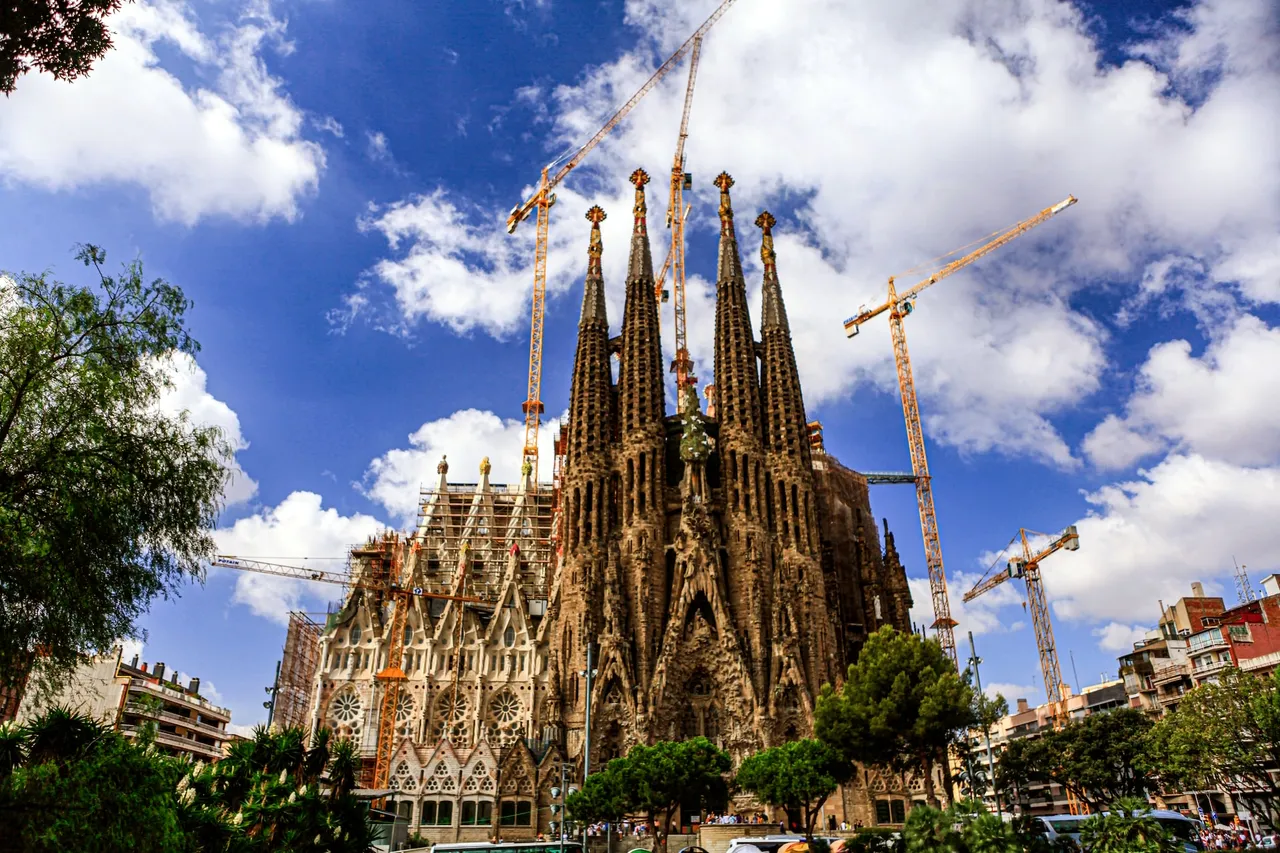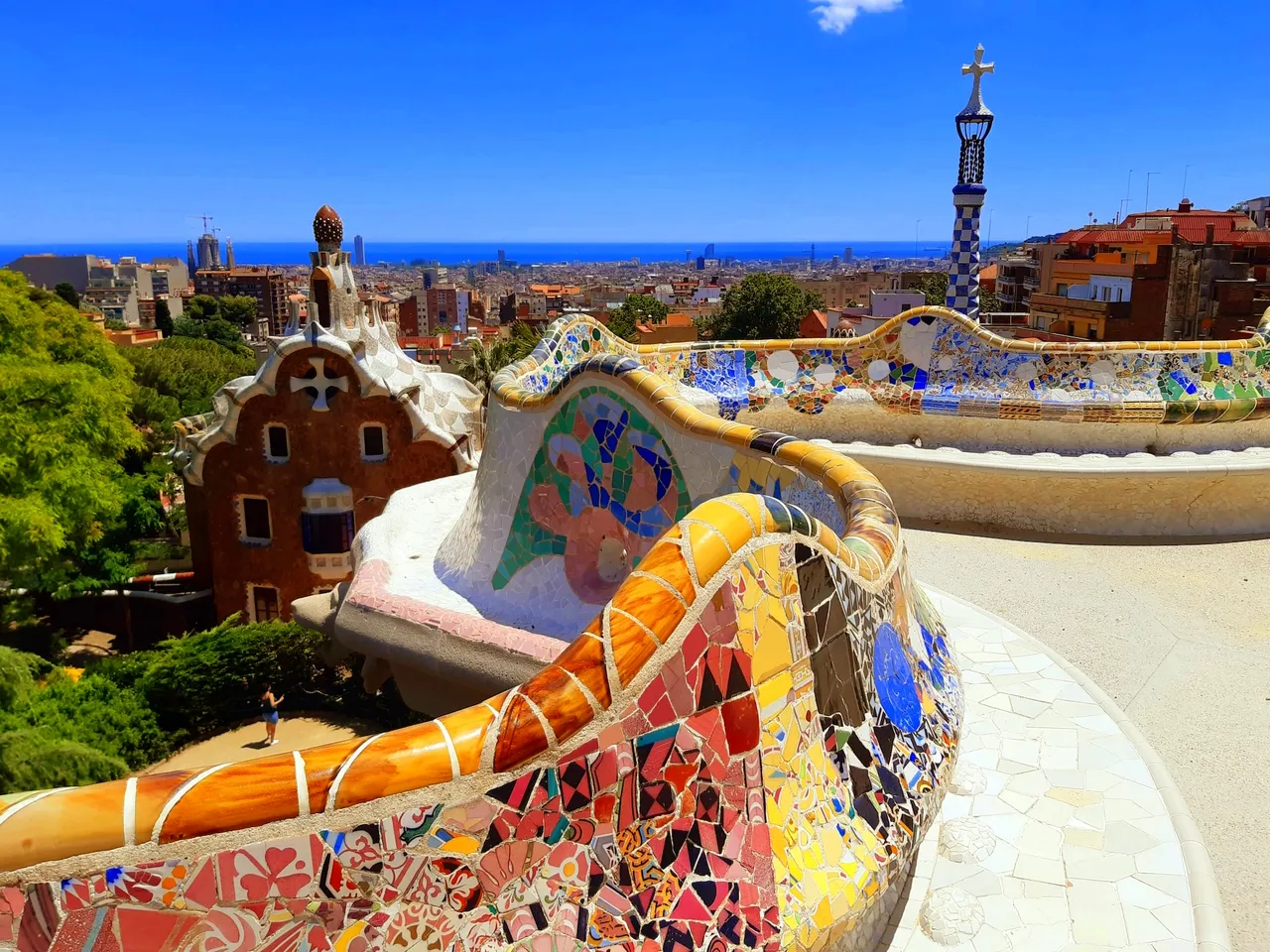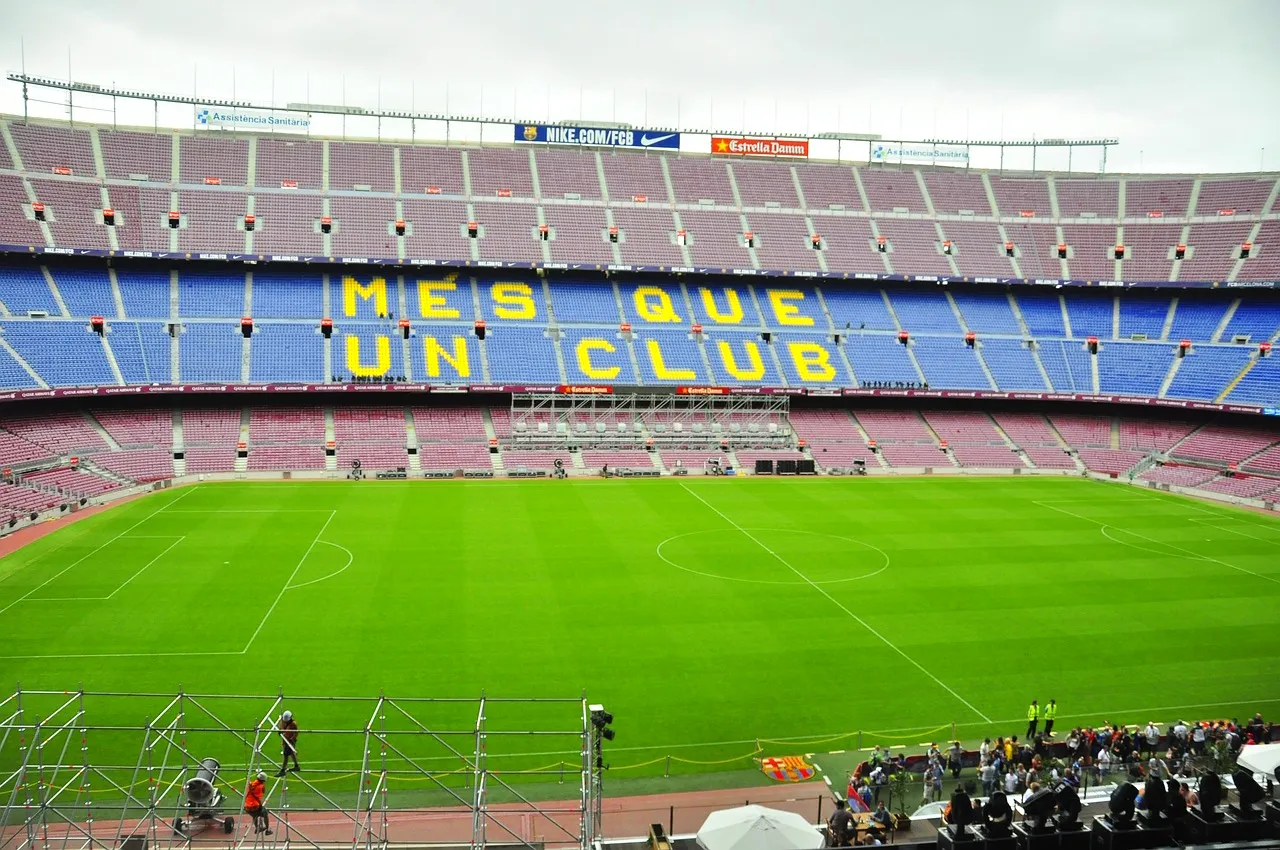Barcelona in January unveils a different facet of this vibrant Catalan city. As winter settles in, the hustle and bustle of summer tourism give way to a quieter, more introspective Barcelona. It’s a time when the city’s rich cultural heritage, historic landmarks, and culinary delights take center stage.
More of Barcelona, Less Waiting
January brings a welcome relief from the usual tourist crowds. Bid farewell to long lines at popular attractions, restaurants, shops, and other venues when you visit Barcelona. With fewer tourists, you can immerse yourself fully in the city’s charm without wasting time in queues.
Barcelona Beyond the Beach
While the beach may not be your go-to spot during this season, Barcelona offers an abundance of things to do and see. Explore the Picasso Museum of Barcelona, stroll through the historic Gothic Quarter, savor Catalan cuisine, and join local festivals in the beautiful Barcelona weather.
January Weather in Barcelona
The average Barcelona in January weather hovers around a comfortable 10°C, with daytime high average temperature reaching approximately 14°C. As the sun sets, the temperature drops to around 4°C, lending a chilly ambiance to the nights. While rain is not a frequent guest, expect around 5 rainy days throughout the month, making it unlikely to dampen your plans. So it’s safe to say that Barcelona is the place to be, to escape from the harsh winter.
Opt for a warm jacket, cozy fleece, good walking shoes, and a trusty sweater or cardigan to stay comfortable.
January Delights in Barcelona: Unmissable Festivals, Famous Attractions, and Activities
As the new year begins, Barcelona awakens with an energy that’s simply irresistible. January in this iconic city is a treasure trove of festivals, attractions, and experiences waiting to be explored. From the architectural wonders of Casa Batlló and Park Guell to the cultural richness of the Sagrada Familia, Barcelona has something for everyone! Here are a few of the must-experience places, festivals, and things to do when visiting Barcelona during January:
Casa Batlló: Architectural Marvel in the Heart of Barcelona
Casa Batlló, often referred to as the ‘House of Bones,’ is a stunning testament to the genius of one of the most famous architects in the world, Antoni Gaudi. The building’s exterior balconies, resembling the jawbones of an otherworldly creature, immediately capture your imagination. Covered in mosaics made from ceramic tile shards, the façade of Casa Batlló showcases Gaudi’s mastery of the trencadís technique.
The core of this UNESCO World Heritage Site resides on its Noble Floor, accessible through a private entrance hall that is illuminated by skylights resembling tortoise shells. This expansive floor, spanning over 700 square meters, is a testament to Antoni Gaudi’s aversion to straight lines. There are no straight surfaces to be found in Casa Batlló, even on the ceiling, which adds an otherworldly ambiance to the space.
Three Kings Parade: A Majestic Epiphany Celebration
If you’re visiting Barcelona in January with kids, mark your calendar for Spain’s incredible Three Kings Parade Festival (Fiesta de los Reyes). This vibrant extravaganza is a major event that promises an unforgettable time.
The Three Kings Parade takes place on the evening of January 5th, commemorating the moment when Wise Men from the East, guided by the stars, arrived in Bethlehem to honor the infant Jesus with gifts of gold, frankincense, and myrrh.
Spanish towns and cities come alive with the Dia de los Reyes, or the Kings’ Day parades, featuring mechanized floats adorned with effigies of Melchior (representing Arabia), Caspar (the Orient), and Balthazar (Africa). As they pass, they shower spectators with handfuls of sweets, creating a candy rain that delights onlookers eagerly awaiting their grand entrance.
Sagrada Familia: An Unfinished Beauty
Sagrada Familia, or the Expiatory Temple of the Holy Family, is an iconic Roman Catholic minor basilica in Barcelona, Spain, envisioned by the brilliant architect Antoni Gaudí. Although construction commenced in 1882, La Sagrada Familia still remains unfinished into the 21st century.
The Sagrada Familia is renowned for its remarkable organic design and stands as one of Barcelona’s most celebrated landmarks. The beauty of Sagrada Familia can be savored year-round, making it an excellent choice for those visiting Barcelona in January, when the crowds are thinner, and the weather is milder.
Barcelona Aquarium: A Submarine Adventure
Discover the wonders of the deep at the Barcelona Aquarium, a renowned learning center and global attraction. With over 450 unique species showcased in 35 captivating exhibits, this aquatic haven offers an underwater discovery like no other.
Here are the different areas located inside the Barcelona aquarium:
- Ozeaneum — Barcelona’s largest aquarian basin with 4 million liters of water, home to sea bream, moray eels, sunfish, rays, sand tiger sharks, and sandbank sharks.
- Mediterranean Aquarium — The world’s largest Mediterranean-themed Barcelona aquarium with 13 dedicated sections showcasing rare Mediterranean sea creatures.
- Theme Aquariums — Explore themed Barcelona aquariums highlighting specific regions and topics, including invertebrate sea creatures, seahorses, shark eggs, tropical corals, and unique underwater creatures.
MNAC – Museum National d’Art de Catalonia
Step into the Museu Nacional d’Art de Catalunya (MNAC), and you’ll find yourself on a journey through time and artistic expression of Catalan art, spanning from the 10th century all the way to the 20th century.
MNAC’s holdings are divided into three major permanent collections:
- Romanesque and Gothic Art: At the national museum you can explore a unique patrimony of Romanesque murals and Gothic art when visiting Barcelona in January.
- Renaissance and Baroque Art: Observe the works of renowned international painters such as El Greco, Velázquez, and Rubens, showcasing the opulence of these artistic periods.
- Modern Art: Uncover the late 19th to early 20th-century art exhibitions, with a focus on Catalan artists and various artistic genres, including the Art Nouveau movements of modernisme and Noucentisme.
Sant Antoni Festival: A Neighborhood Fiesta
Amidst the January cool-down period, Barcelona comes alive with the electric Sant Antoni Festival, a neighborhood fiesta that’s not to be missed. From January 13th to 29th, the Festa Major de Sant Antoni ushers in the city’s festival season with a flourish of free cultural events and lively gatherings.
The festival kicks off with a lively awakening, as neighborhood grillers and trabucaires rouse the early risers to herald the day’s festivities. As the major event reaches its peak, the Diables de Sant Antoni group orchestrates a dazzling correfoc., where spirited participants don devilish disguises and dance through the streets.
On the day of San Antonio, the Els Tres Tombs cavalcade takes center stage. The procession features riders, amazons, and traginers, all accompanied by a dazzling array of carriages.
Shop Rebajas (Sales): Retail Therapy in Barcelona
If you happen to visit Barcelona in January, you’re in for a treat with the famous January Sales, known as “Rebajas.” These retail extravaganzas traditionally kick off on the 7th of January, right after the ‘Reyes’ Three Kings Day, a popular public holiday. Typically, these sales last for about 3 weeks to an entire month, extending until the end of January or the first week of February. Who knows, you may even find some priceless antiques on sale!
Most stores feature three distinct “rebajas” stages, helpfully signaled in shop windows. It starts with ‘las primeras rebajas, offering initial discounts. Then, the second stage, ‘segundas rebajas,’ brings even bigger discounts and ends with the last clearance sales.
Picasso Museum: Where Genius Parties with Paint
Set foot into the captivating world of Pablo Picasso at Barcelona’s renowned Picasso Museum. Home to nearly 5,000 artworks, including paintings, drawings, and engravings, this cultural treasure trove offers an intimate window into Picasso’s early artistic explorations. As you explore this collection, you’ll encounter Picasso’s evolution as an artist, from his formative years to his innovative breakthroughs.
Churros con Chocolate: A Sweet Spanish Delight
A visit to Barcelona in January offers the perfect excuse to indulge in a delightful Spanish tradition – churros con chocolate. Imagine sipping on a steaming mug of hot chocolate paired with these doughy pastries, especially on a chilly winter day.
For churro enthusiasts, Carrer de Petritxol is a must-visit destination. This street is renowned for hosting some of Barcelona’s finest churro shops and has earned a reputation as the city’s chocolate and churro haven. Another must-try is Granja La Pallaresa (Petritxol, 11), a beloved institution famous for serving up traditional churros and rich, dark hot chocolate, often topped with freshly whipped cream.
Flamenco Show: The Soul of Spain
Flamenco, rooted in Spain’s folk music and influenced by Spanish, gypsy, and Moorish traditions, emerged in the 19th century, known as its golden era. This art form marries song, music, dance, hand-clapping, and foot-stomping.
What sets flamenco apart is its raw emotion, evident in its passionate songs and the rhythmic intensity created by hand-clapping, foot-stomping, and acoustic guitars. For tourists, the sheer power and intensity of this art form can be a soul-stirring revelation.
Park Güell: Antoni Gaudi’s Playground of Imagination
Take a step into the surreal world of Antoni Gaudi’s imagination at Park Güell, a true architectural marvel that you cannot miss when visiting Barcelona. Here, you’ll encounter tree-shaped columns, undulating forms, and a colorful mosaic of broken tiles that bring Gaudí’s astonishing designs to life. Perched atop a hill in the heart of Barcelona, Park Güell offers some of the city’s most breathtaking views. Accessible via Carrer d’Olot, the park’s majestic entrance is rich in symbolism, reflecting themes of industrial progress, Catalan society, and spirituality.
La Rambla: Stroll Along Barcelona’s Iconic Boulevard
Strolling along La Rambla in Barcelona is like flipping through the pages of the city’s rich history and vibrant culture. This 1.2-kilometer boulevard, stretching from Plaça de Catalunya to the Christopher Columbus statue by the port, is a point where history meets modernity.
When you visit Barcelona in January, this boulevard walking tour engages all your senses. The tantalizing scents of street food vendors mingle with the sweet notes of buskers’ melodies. Sidewalk cafés invite you to savor a café con leche, while open-air markets dazzle with colorful flowers and handmade crafts.
Turístic Bus: Sightseeing with a Twist
Do you want to explore the gorgeous city of Barcelona in January with the utmost convenience? Look no further than the Tourist Bus, your ticket to a hop-on-hop-off adventure like no other.
- Enjoy informative commentary in 16 languages, providing insights into the city’s history as you travel.
- Stay connected with complimentary Wi-Fi on board the bus.
- Receive a handy map of Barcelona, making it easy to navigate and plan your route.
Calçotada: Catalonia’s Unique Onion Festival
Catalonia is spicing up winter with its sizzling tradition, the Gran Fiesta de la Calçotada. This annual festival celebrates the Calçot, a unique green onion native to Catalonia, combining the flavors of a spring onion and a leek. While the Calçot harvest lasts from November to April, the grand festival is set for January 31st in Valls, the onion capital.
Calçots are charred over open flames, typically in the streets, until their outer layer turns black, revealing a succulent white core. During this yearly celebration in the coldest month, tens of thousands of these delicious onions are devoured by the people of Barcelona in January. Professionals often showcase their skills by consuming 25-30 Calçots in one go, a fiery fiesta you won’t want to miss!
Moco Museum: Where Modern Art Takes Center Stage
In the heart of Barcelona, the Moco Museum offers a vibrant celebration of modern, contemporary art research, and street art. This independent museum, with branches in Spain and Amsterdam, invites you to explore a diverse collection featuring some of the most iconic names in the art world. You can discover the likes of Andy Warhol, Jean-Michel Basquiat, Keith Haring, and Yayoi Kusama through an audio guide, each telling a unique story through their art.
Bar Crawl: Nightlife Adventure in Barcelona
Barcelona, the city that never sleeps, is a dream come true for nightlife lovers. Imagine a place where the night comes alive with vibrant energy and world-class bars and clubs beckon you to dance the night away. It’s no surprise that Barcelona in January has earned its reputation as one of Europe’s ultimate destinations for pub crawls.
A pub crawl is a social experience where you and fellow party enthusiasts hop from one fantastic bar to another, exploring the city’s nightlife hotspots. And when paired with the cold breezy January nights of Barcelona, it’s a recipe for a night you will never forget!
La Boqueria Market: Culinary Wonderland
Looking to stock up on winter groceries during your Barcelona adventure? Look no further than the La Boqueria Market. Although it dates back to 1217 when it was just a humble collection of meat stalls, it has evolved into a bustling foodie’s paradise with over 200 stands that are perfect to beat the average temperature of Barcelona. While La Boqueria takes the spotlight as the largest flea market, don’t miss the nearby Saint Anthony Market, which also offers a delightful array of fresh produce and local delicacies.
Barcelona Cathedral: A Gothic Marvel
Barcelona Cathedral, also referred to as the Cathedral of the Holy Cross and Saint Eulalia, stands as a monumental testament to Catalonia’s rich history. Dating back to the 14th century, this awe-inspiring cathedral was devoted to the city’s co-patron Saint Eulalia. Eulalia, a courageous martyr, met her fate for her unwavering faith in Jesus as the son of God, and her final resting place lies within the cathedral’s crypt. Renowned for its magnificent Gothic-style architecture, the cathedral proudly serves as the official seat of the Archbishop of Barcelona.
Santa Maria del Mar: A Gothic Gem by the Sea
In the heart of Barcelona’s La Ribera district stands an architectural masterpiece that resonates with Catalonia’s maritime legacy. Erected in a mere 55 years, from 1329 to 1383, it embodies pure Catalan Gothic architecture, characterized by its impressive height, wide-open spaces, and grand columns. After your visit, spend time in the charming plaza surrounding the basilica. If you’ve read the novel “The Cathedral of the Sea” by Ildefonso Falcones, visiting the basilica will bring the book to life as you explore Barcelona in January.
Montjuic Cable Car: Soar Above Barcelona
Soar above Barcelona with the Montjuic Cable Car and embark on a unique journey to Montjuïc Castle, perched atop Montjuïc hill. This cable car ride is a thrilling 750-meter ascent, elevating you 84.5 meters above the city. As you glide through the air in the cold weather, enjoy awe-inspiring vistas of Barcelona, including iconic landmarks like La Sagrada Família and the Agbar Tower.
Sant Pau Art Nouveau: A Remarkable Architectural Gem
Nestled in close proximity to the iconic Sagrada Família, the Recinte Modernista de Sant Pau stands as a shining example of Art Nouveau architecture. Originally serving as a fully operational hospital until 2009, it underwent extensive restoration and transformation, reopening in 2014 as an open-air museum. While not all pavilions are accessible to the public, visitors traveling to Barcelona in January can freely explore the enchanting grounds adorned with statues and mosaics.
Wrapping Up
Barcelona in January is a hidden gem waiting to be discovered. While the city may not bask in the warmth of summer, it offers a unique charm of its own during the winter months with pleasant weather. From fewer crowds at iconic attractions to culinary delights like calçotada and hot chocolate with churros, there’s much to savor.
Don’t forget the festive spirit of Sant Antoni, the exciting adventure of a food tour, and the joy of exploring Gaudí’s La Sagrada Familia without the long lines. So, if you’re up for a quieter, more intimate Barcelona experience, this is your chance to take a January trip!



